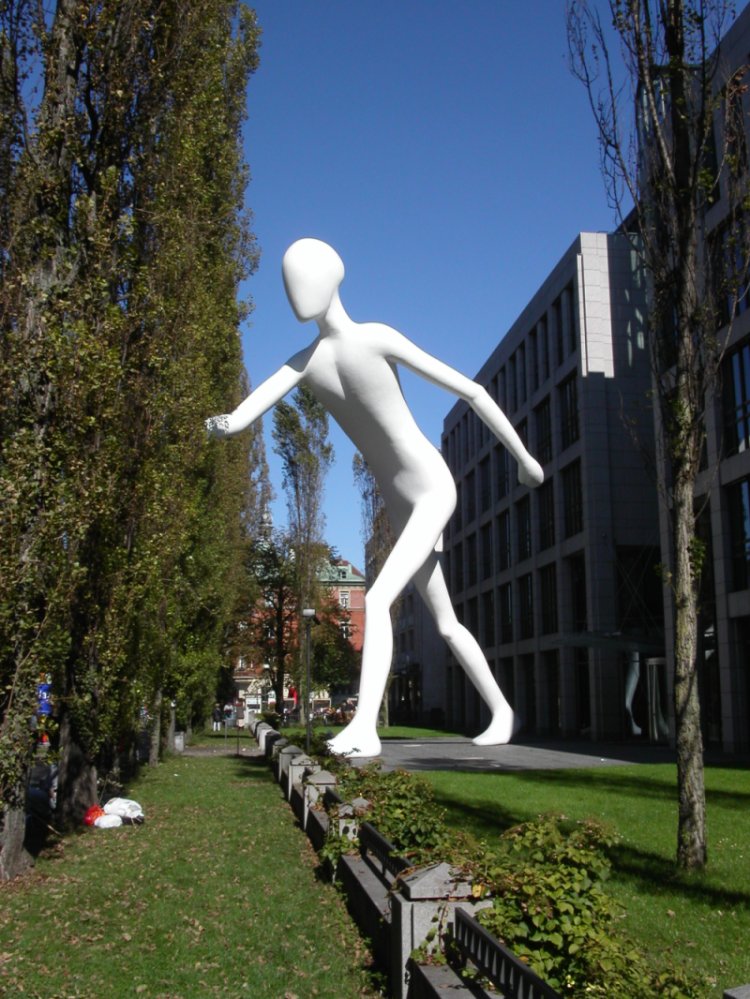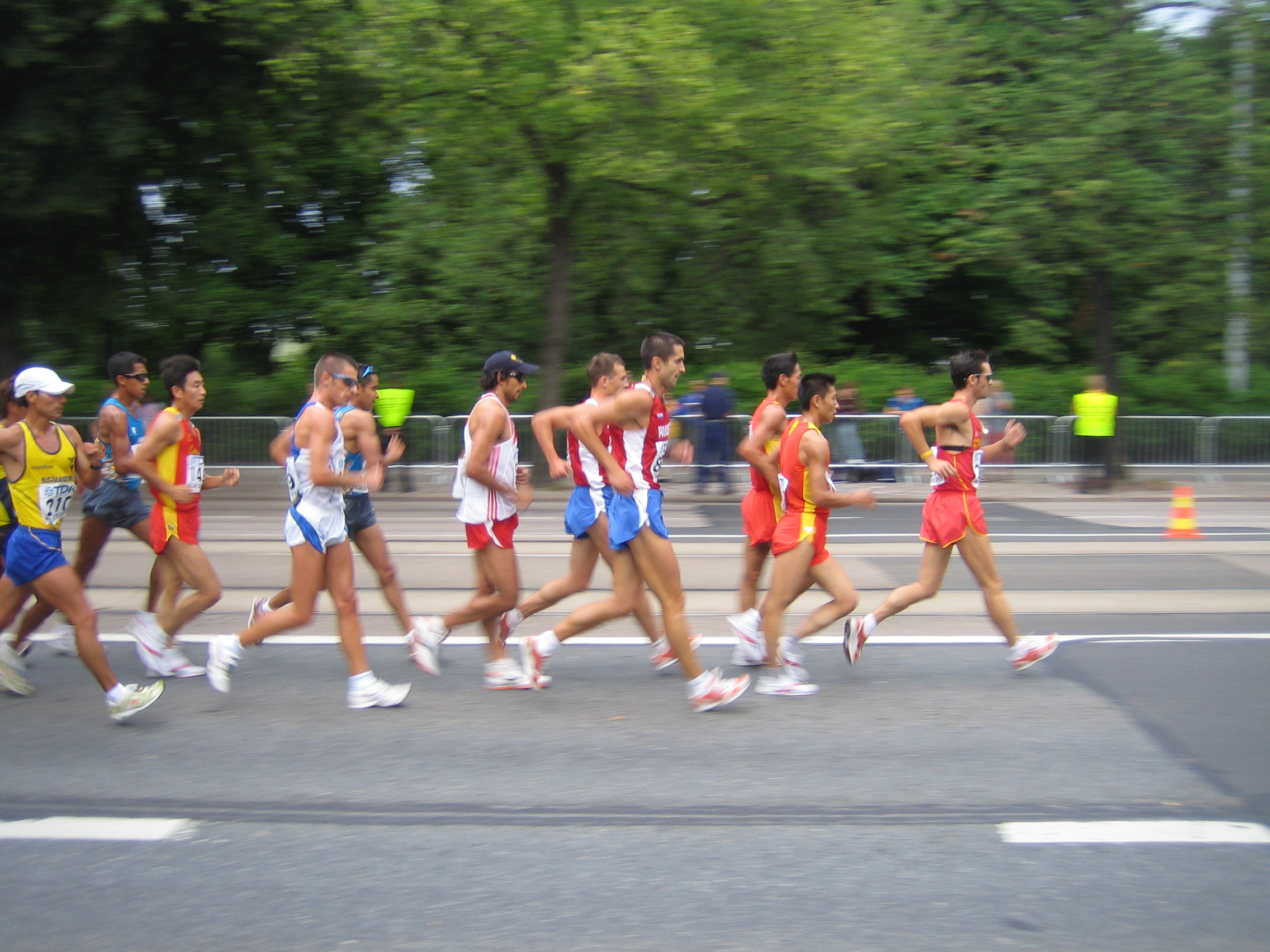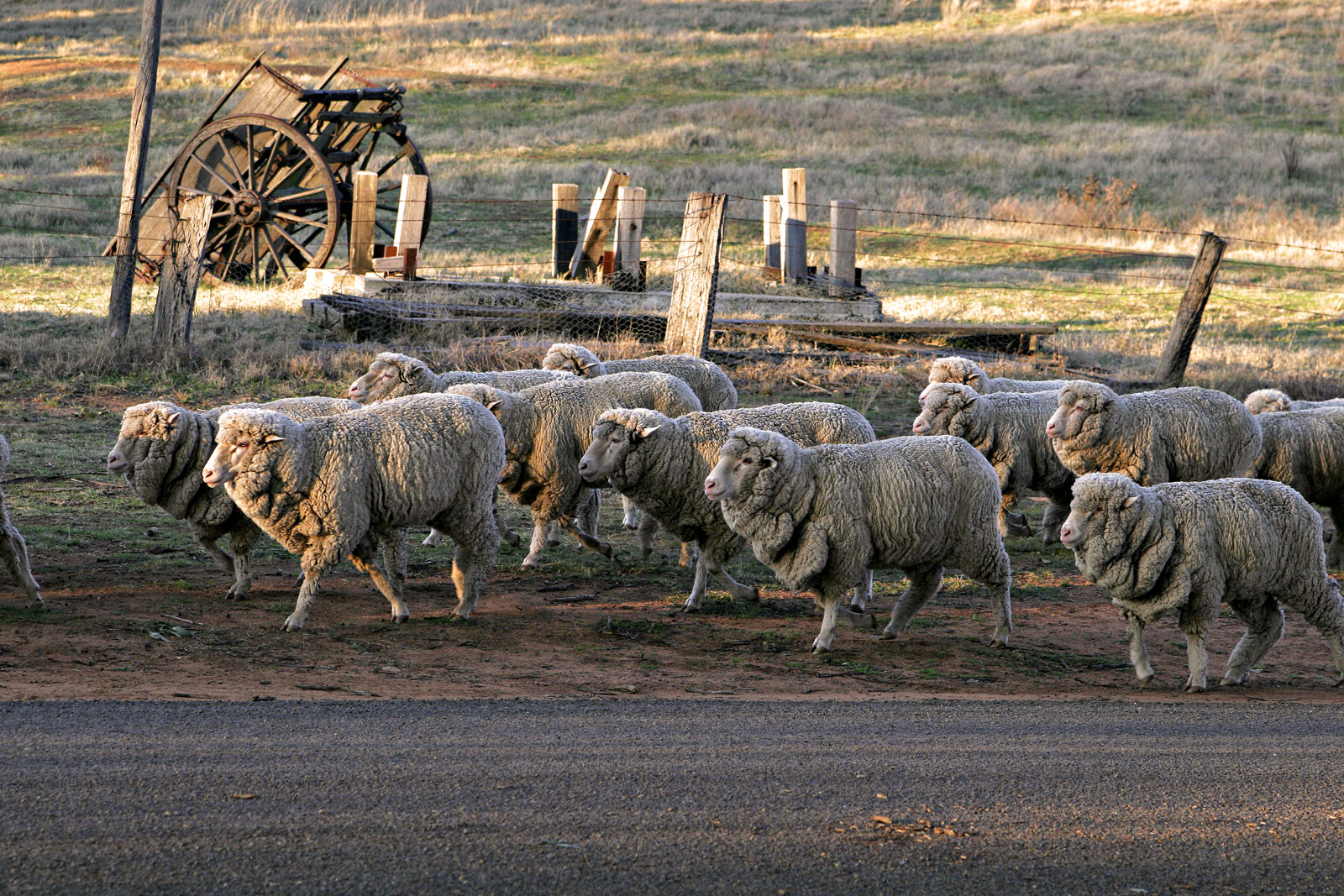Walking
 From Wikidoc - Reading time: 7 min
From Wikidoc - Reading time: 7 min

|
WikiDoc Resources for Walking |
|
Articles |
|---|
|
Most recent articles on Walking |
|
Media |
|
Evidence Based Medicine |
|
Clinical Trials |
|
Ongoing Trials on Walking at Clinical Trials.gov Clinical Trials on Walking at Google
|
|
Guidelines / Policies / Govt |
|
US National Guidelines Clearinghouse on Walking
|
|
Books |
|
News |
|
Commentary |
|
Definitions |
|
Patient Resources / Community |
|
Directions to Hospitals Treating Walking Risk calculators and risk factors for Walking
|
|
Healthcare Provider Resources |
|
Causes & Risk Factors for Walking |
|
Continuing Medical Education (CME) |
|
International |
|
|
|
Business |
|
Experimental / Informatics |
Editor-In-Chief: C. Michael Gibson, M.S., M.D. [1]
Overview[edit | edit source]
Walking is the main form of animal locomotion on land, distinguished from running and crawling. When carried out in shallow waters, it is usually described as wading and when performed over a steeply rising object or an obstacle it becomes scrambling or climbing. The word walking is derived from the Old English walkan (to roll).
Walking is generally distinguished from running in that only one foot at a time leaves contact with the ground: for humans and other bipeds running begins when both feet are off the ground with each step. (This distinction has the status of a formal requirement in competitive walking events, often resulting in disqualification even at the Olympic level.) For horses and other quadrupedal species, the running gaits may be numerous, and walking keeps three feet at a time on the ground.
The average human child achieves independent walking ability between nine and fifteen months old.
While not strictly bipedal, several primarily bipedal human gaits (where the long bones of the arms support at most a small fraction of the body's weight) are generally regarded as variants of walking. These include:
- Hand walking; an unusual form of locomotion, in which the walker moves primarily using his hands.
- walking on crutches (usually executed by alternating between standing on both legs, and rocking forward "on the crutches" (i.e., supported under the armpits by them);
- walking with one or two walking stick(s) or trekking poles (reducing the load on one or both legs, or supplementing the body's normal balancing mechanisms by also pushing against the ground through at least one arm that holds a long object);
- walking while holding on to a walker, a framework to aid with balance; and
- scrambling, using the arms (and hands or some other extension to the arms) not just as a backup to normal balance, but, as when walking on talus, to achieve states of balance that would be impossible or unstable when supported solely by the legs.
For humans, walking is the main form of transportation without a vehicle or riding animal. An average walking speed is about 5 km/h (3 mph), although this depends heavily on factors such as height, weight, age and terrain. A pedestrian is a walking person, in particular on a road (if available on the sidewalk/path/pavement).
Biomechanics[edit | edit source]
Human walking is accomplished with a strategy called the double pendulum. During forward motion, the leg that leaves the ground swings forward from the hip. This sweep is the first pendulum. Then the leg strikes the ground with the heel and rolls through to the toe in a motion described as an inverted pendulum. The motion of the two legs is coordinated so that one foot or the other is always in contact with the ground. The process of walking recovers approximately sixty per cent of the energy used due to pendulum dynamics and ground reaction force. [2][3][4]
The biomechanist Gracovetsky argues that the spine is the major agent in human locomotion. He bases his conclusions on the case of a man born without legs. The man was able to walk albeit slowly on his pelvis. Gracovetsky claims that however important to wellbeing, the function of legs is secondary in a strictly mechanical sense. Legs enable the spine to harvest the energy of gravity in an efficient manner. The legs act as long levers that transfer ground reaction force to the spine. [5]
Lumbar motion during walking consists mostly of sideways rotation. [6] Gracovetsky observes that fish use the same lateral motion to swim. He believes the mechanism first evolved in fish and was later adapted by amphibians, reptiles, mammals and humans to their respective modes of locomotion.
As a leisure activity[edit | edit source]

Many people walk as a hobby, and in our post-industrial age it is often enjoyed as a form of exercise. Fitness walkers and others may use a pedometer to count their steps. The types of walking include bushwalking, racewalking, weight-walking, hillwalking, volksmarching, Nordic walking and hiking on long-distance paths. Sometimes people prefer to walk indoors using a treadmill. In some countries walking as a hobby is known as hiking (the typical North American term), rambling (a somewhat dated British expression, but remaining in use because it is enshrined in the title of the important Ramblers' Association), or tramping (the invariable term in New Zealand). Hiking is a subtype of walking, generally used to mean walking in nature areas on specially designated routes or trails, as opposed to in urban environments; however, hiking can also refer to any long-distance walk. More obscure terms for walking include "to go by Marrow-bone stage", "to take one's daily constitutional", "to ride Shank's pony" or "to go by Walker's bus."
The world's largest registration walking event is the International Four Days Marches Nijmegen. The annual Labor Day walk on Mackinac Bridge draws over sixty thousand participants. The Chesapeake Bay Bridge walk annually draws over fifty thousand participants. Walks are often organized as charity events with walkers seeking sponsors to raise money for a specific cause. Charity walks range in length from two mile or five km walks to as far as fifty miles (eighty km). The MS Challenge Walk is an example of a fifty mile walk which raises money to fight multiple sclerosis. The Oxfam Trailwalker is a one hundred km event.

In Britain, the Ramblers' Association is the biggest organisation that looks after the interests of walkers. A registered charity, it has 139 000 members.
As transportation[edit | edit source]
Walking is also the most basic and common mode of transportation. People around the world use it to get to work, school, do their shopping and to wherever it is the most convenient way.
There has been a recent focus among urban planners in some communities to create pedestrian-friendly areas and roads, allowing commuting, shopping and recreation to be done on foot. Some communities are at least partially car-free, making them particularly supportive of walking and other modes of transportation. In the United States, the Active Living network is an example of a concerted effort to develop communities more friendly to walking and other physical activities.
On roads with no sidewalks, pedestrians should always walk facing the oncoming traffic for their own and other peoples' safety.
When distances are too great to be convenient, walking can be combined with other modes of transportation, such as cycling, public transport, car sharing, carpooling, hitchhiking, ride sharing, car rentals and taxis. These methods may be more efficient or desirable than private car ownership.
In robotics[edit | edit source]
The first successful attempts at walking robots tended to have 6 legs. The number of legs was reduced as microprocessor technology advanced, and there are now a number of robots that can walk on 2 legs, albeit not nearly as well as a human being.
Health benefits[edit | edit source]
Moe steps of walking per day are associated with reduced mortality[1].
Increasing walking by 2000 steps per day is associated with reduced mortality[2]. In older women, walking at least 4000 total steps per day is associated with lower mortality.
Pedometers may help achieve goals[3][4][5].
External links[edit | edit source]
- BMLwalker by Niko Troje
- Walking, by Henry David Thoreau
- London mapmovie showing what to see, where to walk and how to get there
de:Gehen fy:Kuiersport he:הליכה nl:Wandelen fi:Kävely sv:gång th:เดิน yi:גיין Template:Jb1
- ↑ Dwyer T, Pezic A, Sun C, Cochrane J, Venn A, Srikanth V; et al. (2015). "Objectively Measured Daily Steps and Subsequent Long Term All-Cause Mortality: The Tasped Prospective Cohort Study". PLoS One. 10 (11): e0141274. doi:10.1371/journal.pone.0141274. PMC 4633039. PMID 26536618.
- ↑ Kraus WE, Janz KF, Powell KE, Campbell WW, Jakicic JM, Troiano RP; et al. (2019). "Daily Step Counts for Measuring Physical Activity Exposure and Its Relation to Health". Med Sci Sports Exerc. 51 (6): 1206–1212. doi:10.1249/MSS.0000000000001932. PMC 6527133 Check
|pmc=value (help). PMID 31095077. - ↑ de Vries HJ, Kooiman TJ, van Ittersum MW, van Brussel M, de Groot M (2016). "Do activity monitors increase physical activity in adults with overweight or obesity? A systematic review and meta-analysis". Obesity (Silver Spring). 24 (10): 2078–91. doi:10.1002/oby.21619. PMID 27670401.
- ↑ Dasgupta K, Rosenberg E, Joseph L, Cooke AB, Trudeau L, Bacon SL; et al. (2017). "Physician step prescription and monitoring to improve ARTERial health (SMARTER): A randomized controlled trial in patients with type 2 diabetes and hypertension". Diabetes Obes Metab. 19 (5): 695–704. doi:10.1111/dom.12874. PMC 5412851. PMID 28074635.
- ↑ McKay J, Wright A, Lowry R, Steele K, Ryde G, Mutrie N (2009). "Walking on prescription: the utility of a pedometer pack for increasing physical activity in primary care". Patient Educ Couns. 76 (1): 71–6. doi:10.1016/j.pec.2008.11.004. PMID 19097843.
 KSF
KSF